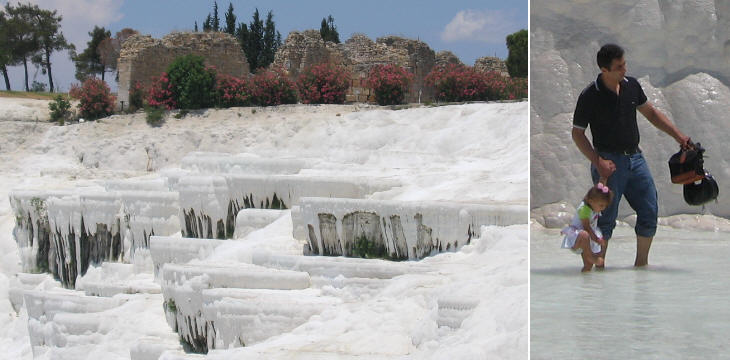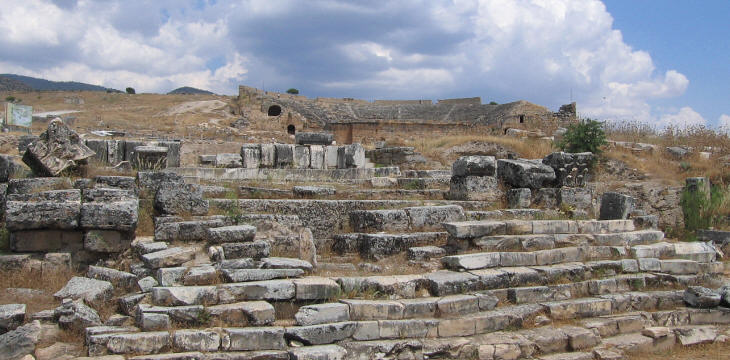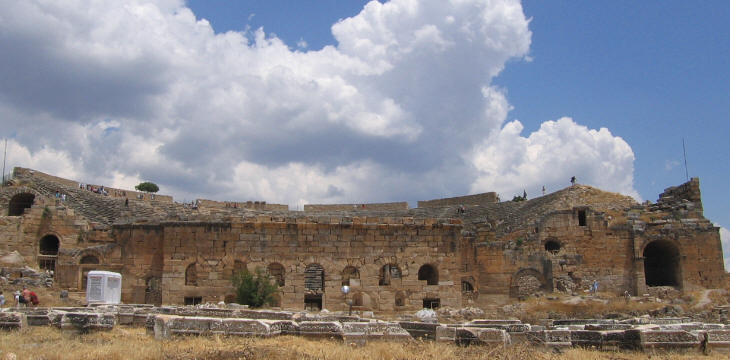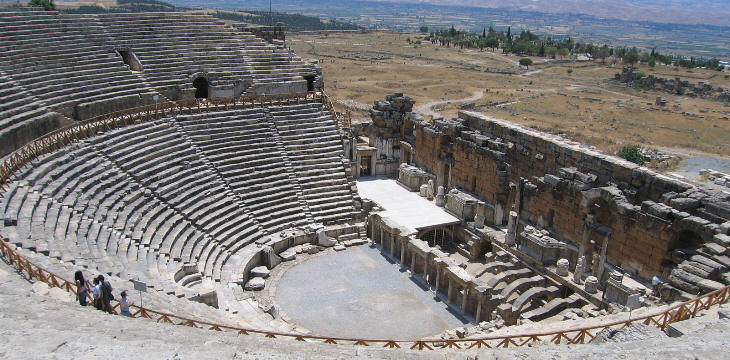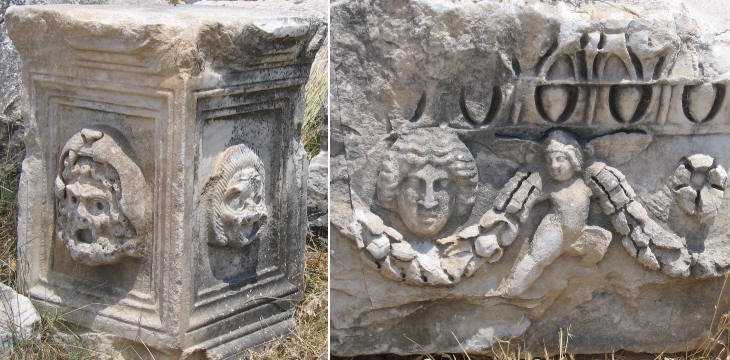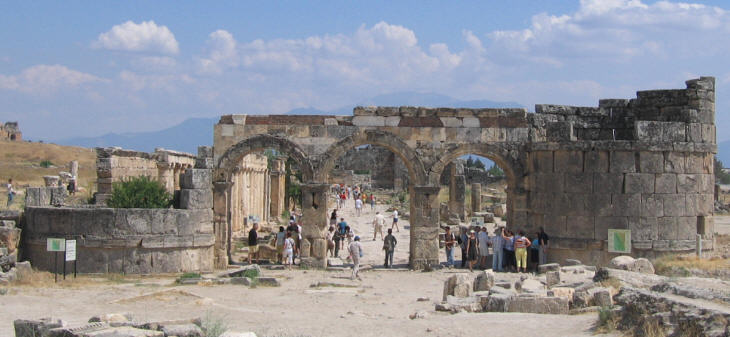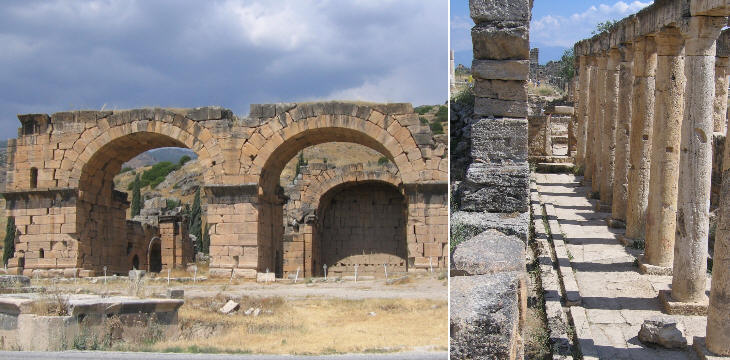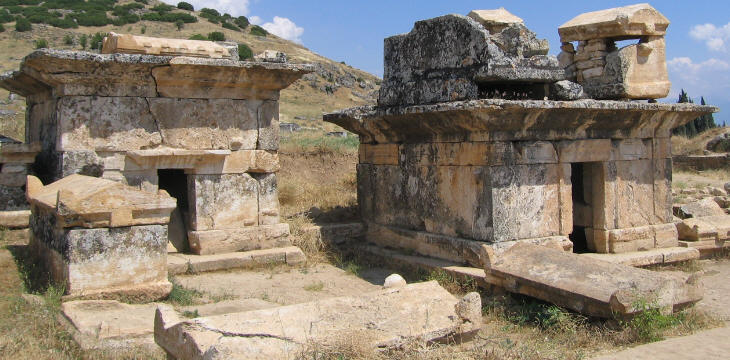  What's New! Detailed Sitemap All images © by Roberto Piperno, owner of the domain. Write to romapip@quipo.it. Text edited by Rosamie Moore. Page added in August 2006. |
 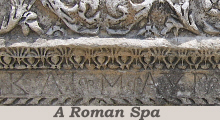 - Hierapolis - Hierapolis(inscription making reference to Emperor Marcus Aurelius - KAI. (Caesar) M. AVR.) Hierapolis is a Turkish "must see" and all tours of the country include a visit to its ruins: however many who have been there may not remember the name of the ancient town, because the location is now known as Pamukkale, (the cotton castle). The name is due to the very white calcareous concretions deposited by mineral springs on the slope near the ancient town.
Turkish authorities, after an initial excessive exploitation from a commercial viewpoint of the natural pools formed by the rocks (which are called travertine), have now placed some limits on access to this beauty spot. The mineral springs attracted the attention of the kings of Pergamum who founded Hierapolis in the IInd century BC.
Hierapolis means sacred town, a reference to a sanctuary dedicated to Apollo: the sanctuary "exploited" another natural phenomenon: a poisonous gas in an underground cave. The site was called Plutonium after Pluto the Latin name of Hades, the Greek god of the underworld. The priests of Apollo (who were eunuchs) performed a sort of demonstration of their powers by going down into the cave with some small animals such as hens and rabbits: the gas was heavier than the air and it had a high concentration only close to the ground: it killed the animals and left the priests unscathed. Turkish authorities have closed the access to the Plutonium to prevent visitors from harming themselves, as the gas is still being produced.
Hierapolis was destroyed by earthquakes in the Ist century AD, so its monuments were rebuilt by the Roman emperors. The wealth of the town and of the whole region is confirmed by a large theatre built by the emperors of the Severian dynasty.
Hierapolis was hit by several earthquakes after it had been reconstructed by the Romans and eventually in 1334 a major earthquake led to the abandonment of the site. Some of the Roman buildings and in particular the theatre withstood the vibrations of the ground due to the vaulted passages upon which the rest of the construction was erected.
Hierapolis was located not far from Afrodisias, a town with a sanctuary dedicated to Aphrodite and where a good school of sculpture had developed, so Hierapolis too had some fine works of art which are now displayed in a small museum. Some interesting reliefs can be seen also in the archaeological area.
The layout of Hierapolis shows the typical structure of Roman towns based on a rectangular grid of streets on both sides of a long main street crossing the whole town. During the reign of Emperor Domitian, Gaius Frontinus, proconsul of Asia Minor, who had his residence in Ephesus, embellished a section of this street with fountains and statues.
Frontinus placed at the western end of the main street a monumental arch dedicated to the emperor. The Romans used to define precisely the boundaries of their towns in order to ensure easy compliance with several laws establishing what could and could not be done within them: so this gate had an administrative purpose, not a military one because at that time Hierapolis did not have walls. These were built at a later time and protected just a portion of the Roman town.
Hierapolis had several baths which exploited the mineral springs: the major ones were located near the sanctuary and near the gate. Next to the gate there was also a large market with porticoes. Frontinus took care of some very natural needs; the men's room between the gate and the market maybe lacked some privacy, but was definitely very imposing.
The road beyond Domitian's gate was flanked by an enormous number of funerary tombs of different shapes and sizes. Archaeologists have come to the conclusion that some of these monuments were built as part of a propitiatory (atonement) rite: sick (and wealthy) people who came to Hierapolis to recover their health, paid to have a tomb in the hope that they would not eventually need it. That may also explain why some monuments were decorated with phalli, a symbol of life, rather than death. Map of Turkey with all the locations covered in this website  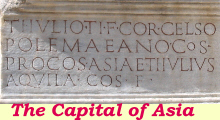  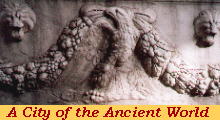 |
